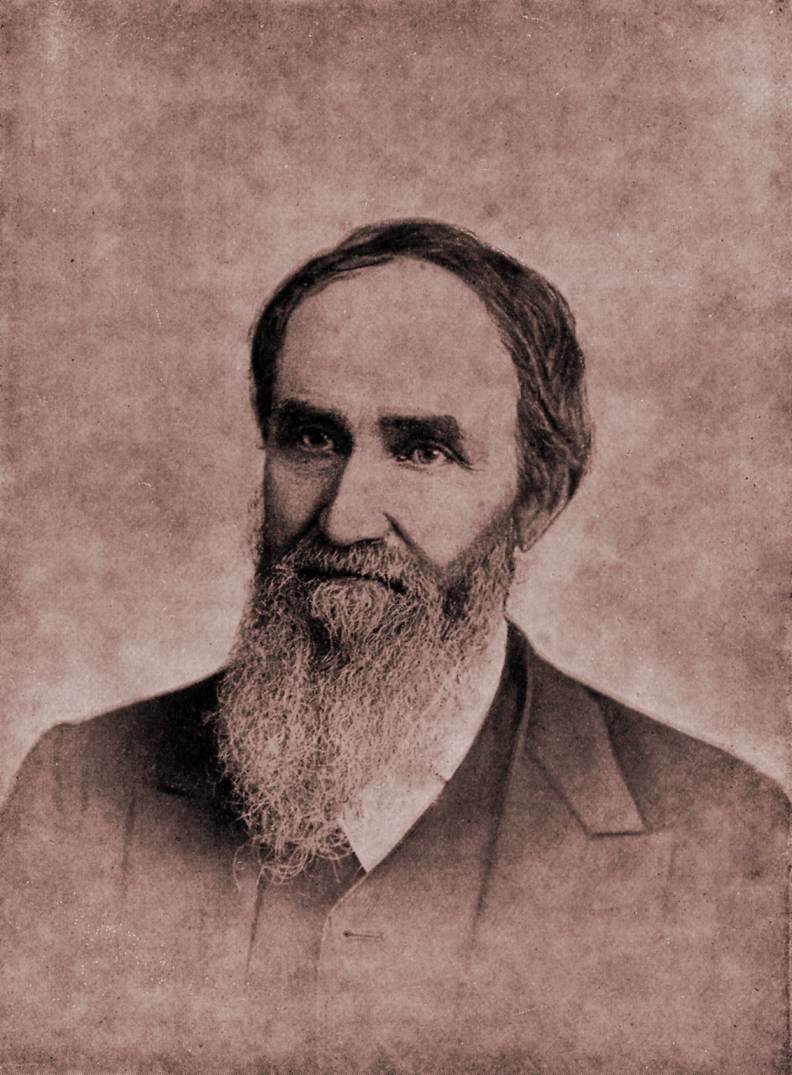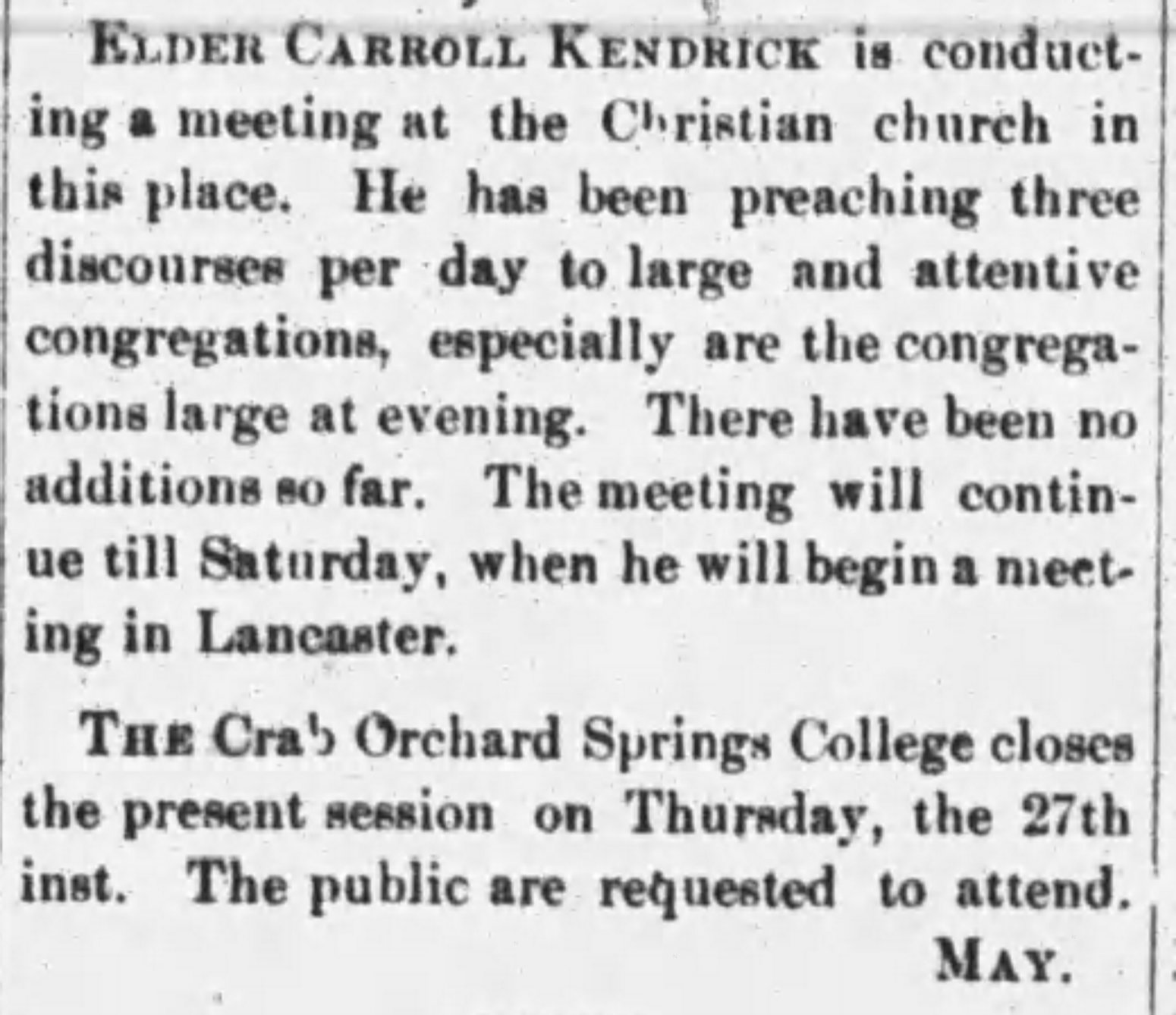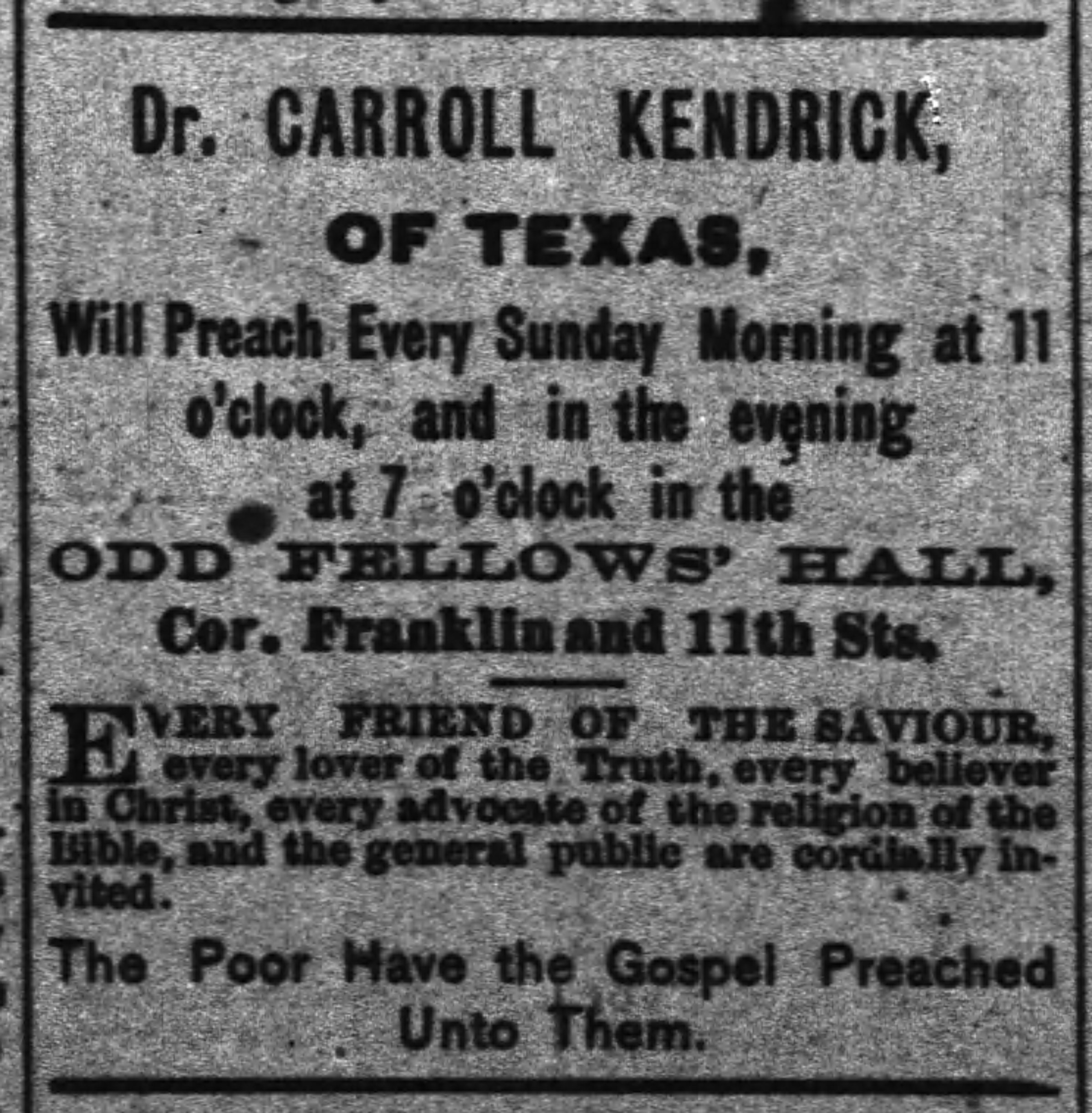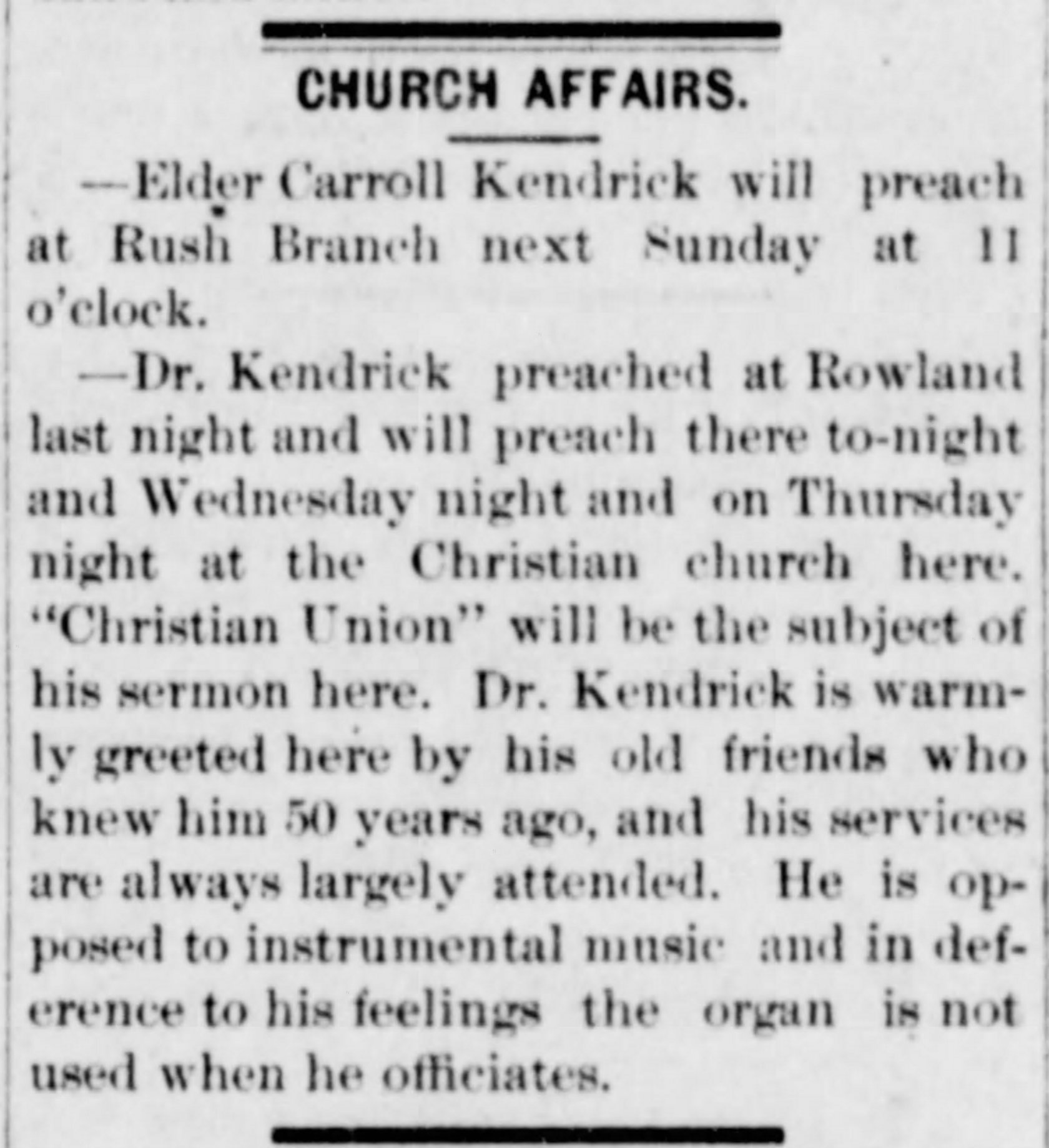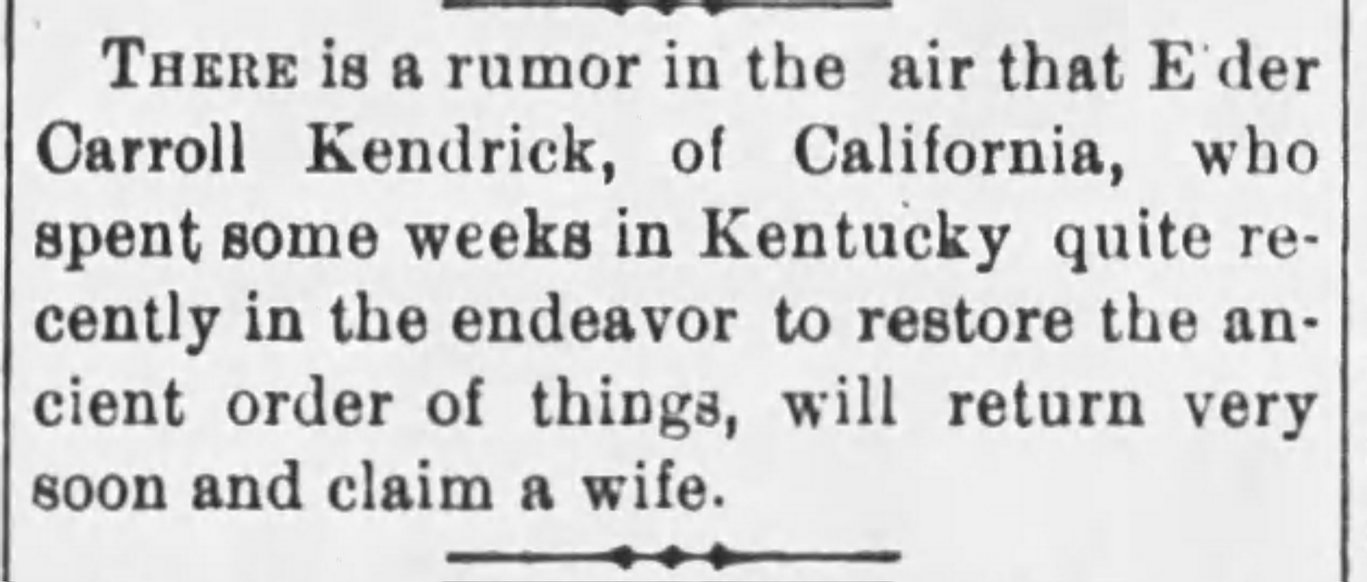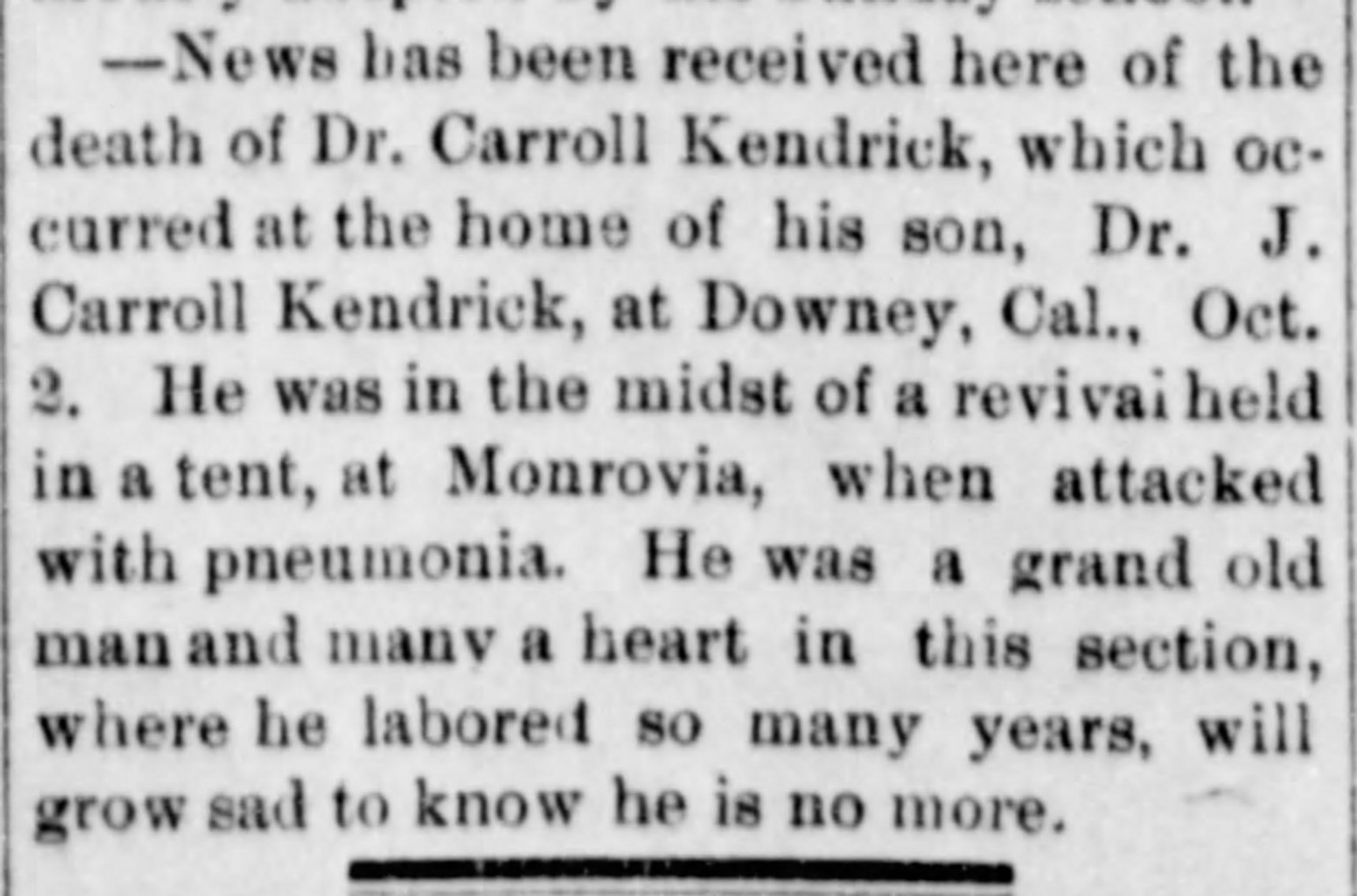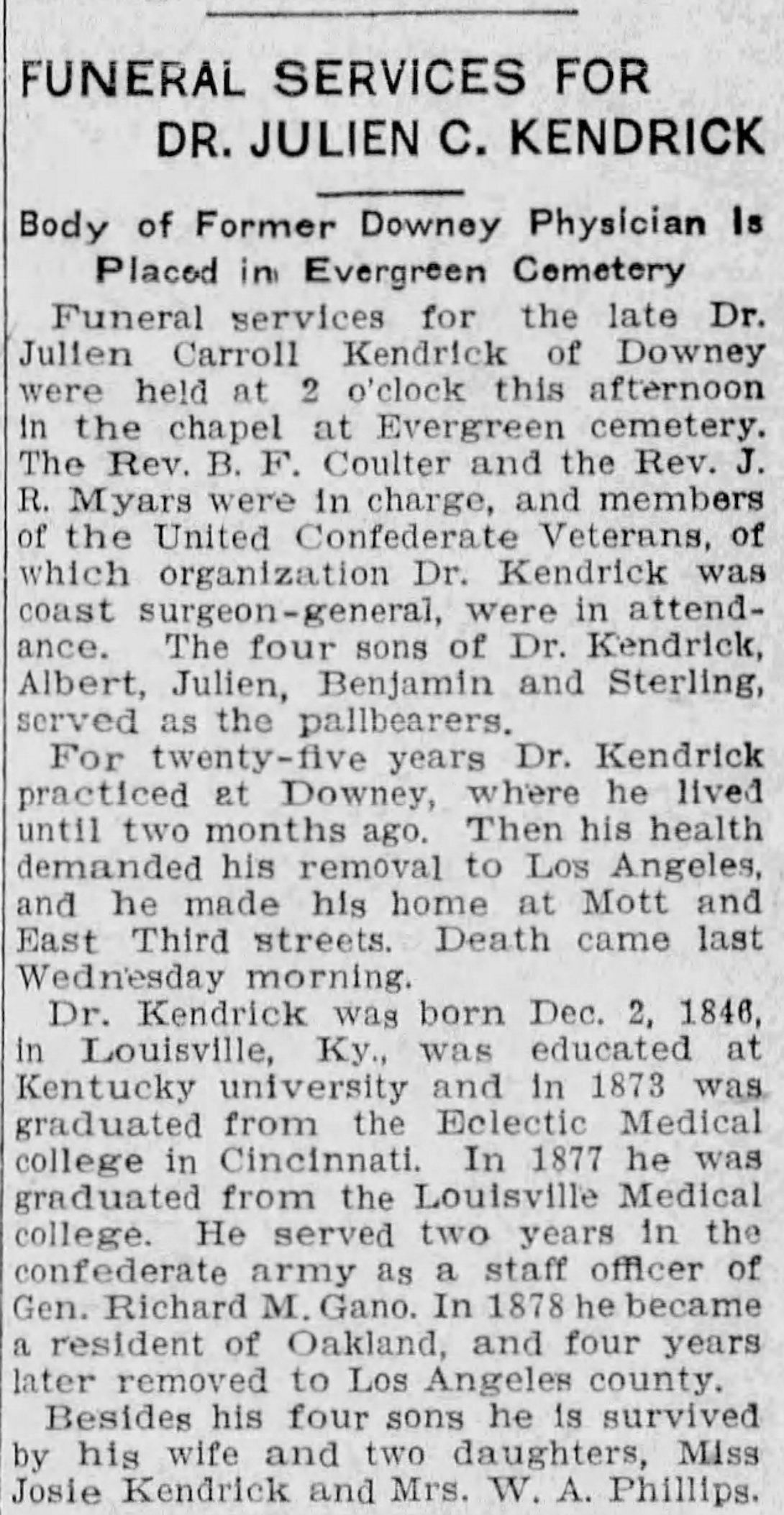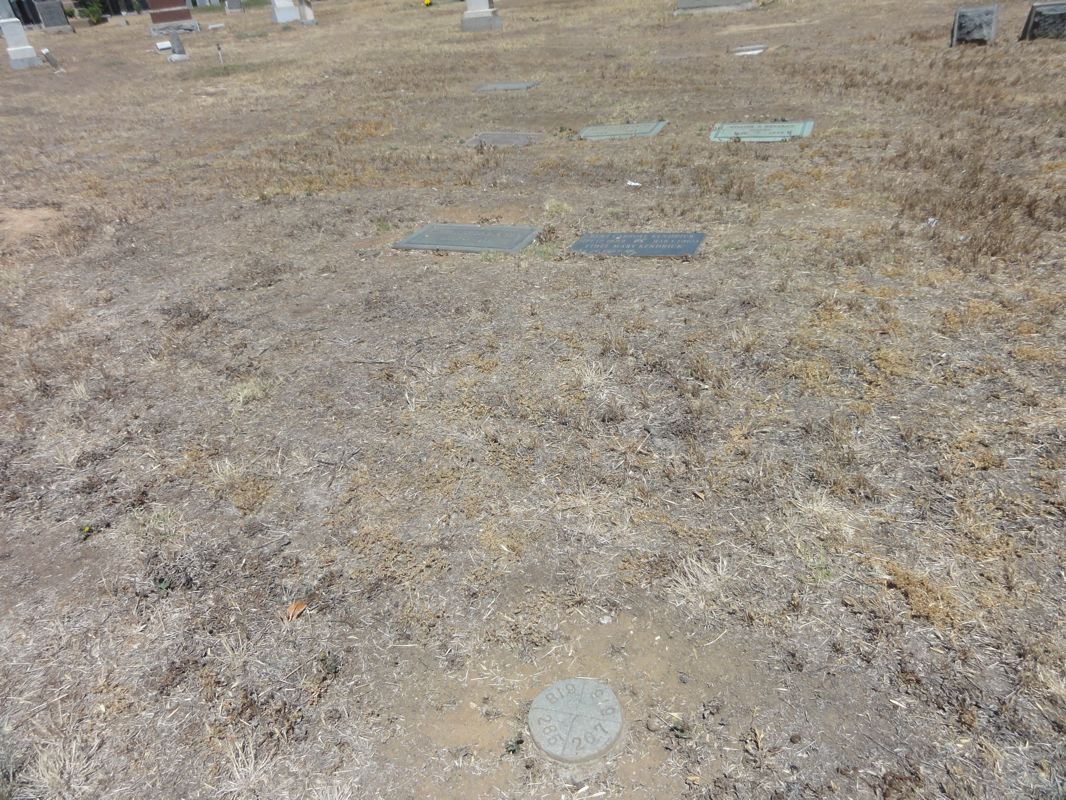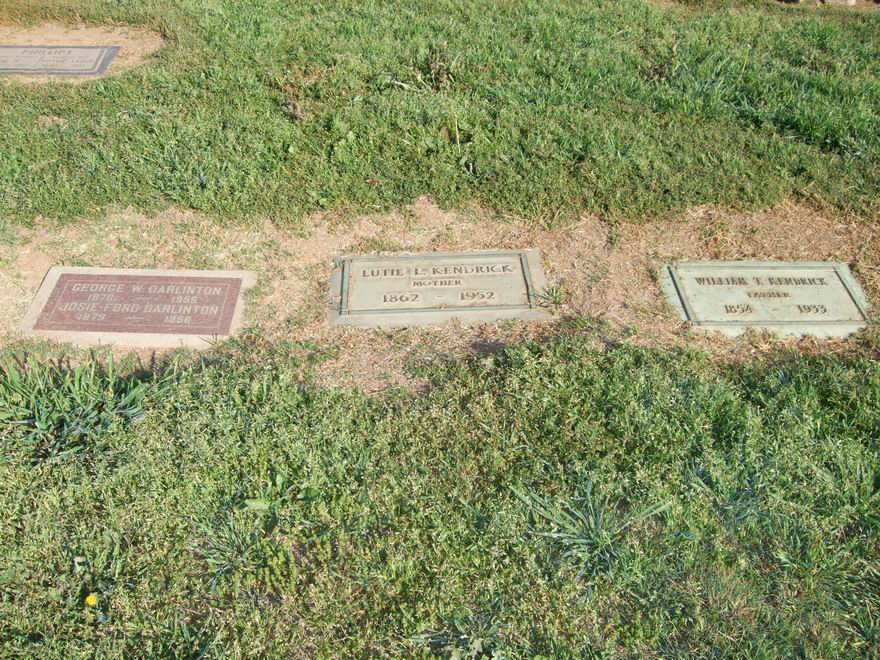Dr. Carroll Kendrick
1815-1891
Christian Writer, Preacher, Evangelist: A True Soldier Of The Cross
He Baptized Over 20,000 People
![]()
The Life Of Carroll Kendrick
Was born Dec. 29, 1815, on Bigby Creek, eighteen miles from Columbia, Tenn. When about four years old, his parents moved across the Tennessee line into Lauderdale county, Ala., where he grew up. His Sunday schooling was largely rolling huge stones into Bluff creek valley, fishing, etc., with an occasional visit to the Baptist monthly meetings. There were no Christian Lord's Day schools, and but a poor showing of any kind of schools there.
But his parents were honest, sensible and industrious, and his mother was especially pious; praying in the family, and trying to direct all her children in the right way. There were nine girls and four boys. The two oldest boys and the youngest girl died while children. Three of the other girls are dead, leaving five sisters and no living brother. His brother, Allen Kendrick, was a brilliant and able preacher of the old gospel, and died in 1859, in Tennessee. His parents and grandparents lived to a good old age, but are all gone long since.
Carroll Kendrick was early and deeply impressed with the necessity of being a Christian, mostly by the prayers and teachings of his mother; but it took him four years careful reading of the Old Testament, and twelve reading of the whole of the New, to rid himself of popular doctrines, and learn what to do to become a Christian. When be understood this, he wrote to his brother, then an active evangelist, met him forty miles on the way, and was immersed "for the remission of his sins." He was then nearly eighteen, and has never for one moment regretted this start. Two things only he regrets - that he did not start sooner, and that he has not been more devoted and useful.
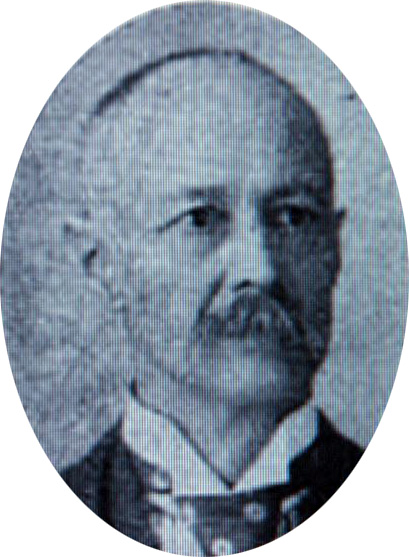 When
he was a little boy, his mother so portrayed heaven that he was
constrained to ask, Who will be
surest to get there? The answer was,
preachers. This he has since
doubted, but from that moment, with that faith which a child ought to
have in a good mother, he fully determined to be a preacher, if he ever
got to be a Christian; and now that he
was a Christian, he began to
think more seriously of preaching, though he had never at any time given
up the early resolve. His brother was traveling and preaching, and only
occasionally called on the family; and Carroll had the care of his
mother and four sisters, and no schools, no church meetings, no papers
or books, except the ever blessed Bible. Almost two years passed in this
way, and then he went alone about one hundred and twenty miles, and
among strangers, except his sister and her husband, he made the
experiment, speaking several times. This was in the fall, and before he
was twenty, but the family at home did not know this till the following
Spring. Meantime he had moved his mother and sisters to West Tennessee,
and, with his brother, secured a home. When he got his blacksmith shop
up, coal burned, and everything ready for work, his brother insisted on
his commencing to preach, and proposed to be responsible for the care of
the family if he would begin. The two rode nearly fifty miles to get a
young brother, W. H. Rutherford, to travel with him. Strong in faith,
and full of zeal, they spent some four months in going over West
Tennessee, and preaching in private houses, school-houses, etc., to many
or few - generally to few. They had no assurance of support from any man.
But they had good meetings, and brought a number into the fold. In the
fall he attended a series of meetings in West Tennessee and north
Alabama, and was much encouraged. But he deeply felt the need of
education, and moving the family near to Paris, where there was a good
little church, and some school privileges, he spent a year there,
preaching and studying as best he could. Then having exhausted his six
hundred dollars, which he had earned before, he determined to try to
teach school, and did teach five months near Moulton, Ala., gave fine
satisfaction, and learned more than in any five months since. All the
while he was preaching and baptizing. In the summer and fall came his
series of camp-meetings again, all of which were successful. These were
kept up each year. One year he spent near Mooresville, Ala., and went
eight miles to recite his Latin and Greek to Mr. Mickle. That year he
baptized about one hundred and fifty. He had previously studied Latin
under J. E. Edmonson, in Moulton, Ala.
When
he was a little boy, his mother so portrayed heaven that he was
constrained to ask, Who will be
surest to get there? The answer was,
preachers. This he has since
doubted, but from that moment, with that faith which a child ought to
have in a good mother, he fully determined to be a preacher, if he ever
got to be a Christian; and now that he
was a Christian, he began to
think more seriously of preaching, though he had never at any time given
up the early resolve. His brother was traveling and preaching, and only
occasionally called on the family; and Carroll had the care of his
mother and four sisters, and no schools, no church meetings, no papers
or books, except the ever blessed Bible. Almost two years passed in this
way, and then he went alone about one hundred and twenty miles, and
among strangers, except his sister and her husband, he made the
experiment, speaking several times. This was in the fall, and before he
was twenty, but the family at home did not know this till the following
Spring. Meantime he had moved his mother and sisters to West Tennessee,
and, with his brother, secured a home. When he got his blacksmith shop
up, coal burned, and everything ready for work, his brother insisted on
his commencing to preach, and proposed to be responsible for the care of
the family if he would begin. The two rode nearly fifty miles to get a
young brother, W. H. Rutherford, to travel with him. Strong in faith,
and full of zeal, they spent some four months in going over West
Tennessee, and preaching in private houses, school-houses, etc., to many
or few - generally to few. They had no assurance of support from any man.
But they had good meetings, and brought a number into the fold. In the
fall he attended a series of meetings in West Tennessee and north
Alabama, and was much encouraged. But he deeply felt the need of
education, and moving the family near to Paris, where there was a good
little church, and some school privileges, he spent a year there,
preaching and studying as best he could. Then having exhausted his six
hundred dollars, which he had earned before, he determined to try to
teach school, and did teach five months near Moulton, Ala., gave fine
satisfaction, and learned more than in any five months since. All the
while he was preaching and baptizing. In the summer and fall came his
series of camp-meetings again, all of which were successful. These were
kept up each year. One year he spent near Mooresville, Ala., and went
eight miles to recite his Latin and Greek to Mr. Mickle. That year he
baptized about one hundred and fifty. He had previously studied Latin
under J. E. Edmonson, in Moulton, Ala.
In the summer of 1836, he went alone on horseback about three hundred miles to attend the first state meeting he had ever heard of. It was at Harrodsburg, Ky. For some time after he was baptized, he thinks he had never heard of A. Campbell or his co-laborers. But at this meeting he heard B. W. Stone, J. T. Johnson and many others, and preached with great embarrassment on ''True Wisdom," reading Prov. 8.
Bacon College was there, and he was encouraged to enter. He returned to Alabama, carrying a Dr. Gatchell to take his place as an evangelist, and returned to Bacon College. He borrowed money to pay tuition and board, till Sam G. Mullins invited him to board in his family. There was a society which proffered to pay current expenses, but he declined in favor of others needing aid. At Danville, Perryville, Lawrenceburg and other places. he preached while at college, receiving enough to pay indebtedness and to live.
Near Stanford, Ky., Oct. 15, 1840, he was married to Mary Wade Forbes.
Father M. A. Stemmons graphically described to the writer many incidents of the great work done by "Brother Carroll," as he familiarly called him, during the year 1842. About a thousand persons were brought into the fold that year under his preaching. "It seemed," said he, "everybody would learn the way of truth." The pedo-baptists, in order to check the "great heresy," sent for Rev. N. L. Rice. He came, and, Goliah-like, defied the camp of Israel, and warmly expressed his ardent desire that some one would undertake to defend the heresy in order that he might more thoroughly expose its fallacies. We felt intimidated and greatly oppressed; and oh, so relieved when Bro. Carroll arose in the audience and said if it would be any accommodation to the gentleman, he would show himself obliging! Dr. Rice came from the pulpit, and down the aisle, met Bro. Carroll, and taking him by the hand conducted him to the front. Subsequently he avowed it a great condescension to debate with one who could not say Hic, haec, hoc, but for the sake of crushing out this pernicious doctrine he would do so. Bro. Carroll was fresh from college, and I assure you handled him without gloves. Day after day found the great N. L. Rice, with his great assumptions, his erudition, his pile of big books, going down, down, chagrined, humiliated, whipped; while day by day little Carroll Kendrick, with the little book, came up, up, up; till before our admiring eyes he was grand. I witnessed both the Campbell and Rice debate and the Kendrick and Rice debate, and I declare to you the defeat was more signal when this great champion attacked the truth at Stanford, Ky.
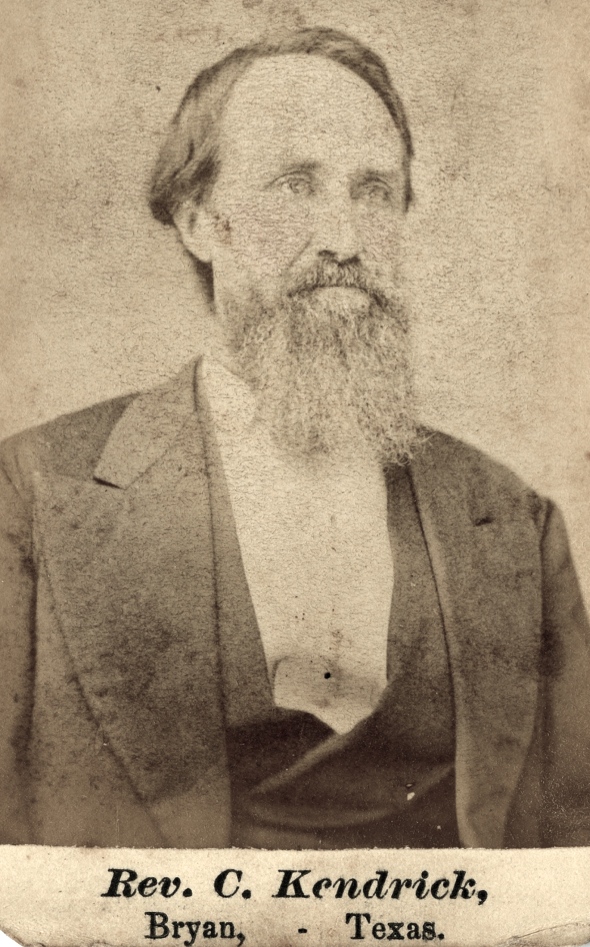 His
physical strength falling, he was forced to be more moderate in his
labor. Yet during the twelve years spent in Kentucky he ceased not to
declare the whole counsel of God, debating, writing, preaching and
laboring from house to house. The year 1845 and 1848 he spent with the
First church in Louisville, formed the Second church on Hancock street,
edited and published the Christian Journal, doubling its subscription in one year. But
failing health determined him on moving to Texas, and he arranged to go.
Providence, however; ordered otherwise. Moving to Harrodsburg; he
published the Ecclesiastical
Reformer. The Christian
Journal was a fine success; so was the
Refomer. No such success had
attended any other of our papers. But he had cholera twice, and was fast
failing. Having witnessed up to that time about ten thousand additions
to the church, he left Frankfort, Ky., Jan. 14, 1851 and the fifteenth
of the next month landed in Texas. There be spent nearly 37 years, and
witnessed another ten thousand additions and more to the army of King
Emanuel. Meanwhile Franklin College had given him the honorary degree of
M. A., and he had his medical diploma. Money was scarce in Texas, and he
had to practice medicine for a living, and did more practice perhaps for
many years than any one of whom he knew in the state. At the same he
averaged at least one hundred sermons a year, besides lecturing on
temperance, hygienic and other subjects affecting the welfare of the
people. These do not include frequent efforts in protracted meetings. He
received little pecuniary support for preaching, never relied on it, nor
was he governed by it. Though sometimes he has been well supported, on
the whole he has received little more than traveling expenses. Still
every year there were offers of ample support, especially if he would
consent to become what is termed the pastor of a church. Societies would
have lent willing aid; indeed he might have made merchandise of the
gospel, and accumulated much money. But he preferred to go as Paul went,
and as all the ancient preachers went, and as the fathers of this
reformation went, relying on God and entering such doors as Providence
opened. Today he would take the same course, if he had the race to run
over, because so the first preachers did. He deems this reason enough.
His
physical strength falling, he was forced to be more moderate in his
labor. Yet during the twelve years spent in Kentucky he ceased not to
declare the whole counsel of God, debating, writing, preaching and
laboring from house to house. The year 1845 and 1848 he spent with the
First church in Louisville, formed the Second church on Hancock street,
edited and published the Christian Journal, doubling its subscription in one year. But
failing health determined him on moving to Texas, and he arranged to go.
Providence, however; ordered otherwise. Moving to Harrodsburg; he
published the Ecclesiastical
Reformer. The Christian
Journal was a fine success; so was the
Refomer. No such success had
attended any other of our papers. But he had cholera twice, and was fast
failing. Having witnessed up to that time about ten thousand additions
to the church, he left Frankfort, Ky., Jan. 14, 1851 and the fifteenth
of the next month landed in Texas. There be spent nearly 37 years, and
witnessed another ten thousand additions and more to the army of King
Emanuel. Meanwhile Franklin College had given him the honorary degree of
M. A., and he had his medical diploma. Money was scarce in Texas, and he
had to practice medicine for a living, and did more practice perhaps for
many years than any one of whom he knew in the state. At the same he
averaged at least one hundred sermons a year, besides lecturing on
temperance, hygienic and other subjects affecting the welfare of the
people. These do not include frequent efforts in protracted meetings. He
received little pecuniary support for preaching, never relied on it, nor
was he governed by it. Though sometimes he has been well supported, on
the whole he has received little more than traveling expenses. Still
every year there were offers of ample support, especially if he would
consent to become what is termed the pastor of a church. Societies would
have lent willing aid; indeed he might have made merchandise of the
gospel, and accumulated much money. But he preferred to go as Paul went,
and as all the ancient preachers went, and as the fathers of this
reformation went, relying on God and entering such doors as Providence
opened. Today he would take the same course, if he had the race to run
over, because so the first preachers did. He deems this reason enough.
It was well understood between him and his affianced, that economy and industry should characterize their married life; that beyond the necessaries of life, property accumulated should be for the spreading of Zion. Again if life were to live over this would be one of its cardinal rules, adopted and strictly kept.
The long hot summer in Texas, and his excessive labors, were fast wearing him out. The same was true of his wife. Hence, to keep above the ground, and do a little more for the gospel, in 1877 he came to California, lived three years in Oakland, and has now lived seven years at Downey City, Cal. His wife lived no doubt five or six years longer by coming here; but three years ago, surrounded by all her living children (nine), she peacefully entered her rest. The husband and father lingers on, in somewhat improved health, and keeps up his writing and preaching much after the former style.
He believes, if not in a strict construction of the Scripture, at least in strict, implicit and universal obedience to them. He has little confidence in the piety of any one who refuses to obey Jesus Christ in anything. He favors no society. He teaches and practices kneeling or bowing in prayer, when this is reasonably practicable; for so did David, Solomon, Daniel, and our blessed Savior, and all the pious of whom record is made. The time comes when every knee shall bow to Heaven's authority. He rejects instrumental music in the worship, because God has prescribed how he shall be worshiped, and in the instructions nothing is said of such means of praise. He opposes the one-man pastor system, now so popular; and all vicarious worship or service, since all we are brethren and "kings and priests unto God."
He is practically a missionary man, and has given nearly fifty-two years to the work, and proposes to give all the remainder. many or few, trusting not in societies or the promises of men, but in God's promises alone.
The greatest complaint he urges against the religious world is, a lack of faith, of piety, of humility, brotherly love, zeal, and true Pauline devotion; a readiness to do and suffer for Christ's sake, as may become necessary, rather than compromise his word, or fall to do what might be done for the union of Christians and the salvation of souls. If the brethren do their duty in supporting him, it is well; if not, he murmurs not, but works on, willing to wait for his rest and reward. He feels the need of the aid which Christians can render; he feels it much, and is ever ready to receive, gratefully receive it, but he trusts in Christ alone, and trusts confidently. To him there is much meaning in Phil. 4: 6, "Be anxious for nothing."
Having read the Old Testament, in his morning devotion, through, every year since he became a follower of Christ, and the New Testament at least as often in his evening worship, besides other readings and Bible investigations, critical and general, he proposes to finish his course in this way.
The little bell now on his mantel has called the family to the sacred lessons night and morning for forty-six years, and he enjoys this worship more now, even with his reduced family, than when be first began.
His discussions, oral and written have been with the strongest opposers of truth, in Kentucky, Texas and California, and great credit has been given him as a debater. Physically he knows not what fear for personal safety is. Morally he is a hero, standing boldly unscreened from the darts of the ignorant, the deceived, and the wicked.
His success in money making in the time devoted to this, in medicine, in science, and literature, etc., gives some guarantee as to what he might have done as a leader in these departments, had he not preferred as a calling, the ancient gospel. Like Paul, that all he was or might have been, was given to the gospel. His life certainly shows little care for the praise or honors of men; and much care for the pleasure and honor of God. His manner of preaching, writing, dressing, and living, has not been to please the ignorant and the ungodly, but to profit them. Their praise has been as rottenness their frowns as naught, except as he might do them good.
His manner and his fixed purpose, carried into his church work, reproving sin, correcting error, etc., have not always contributed to his popularity among a portion of his brethren, but they have certainly gained for him among all classes the greatest confidence and the highest respect. This confidence and love Of the wise and the good is, to him, next to the approbation and love of God. Hence he is happy and confident, unmurmuring and uncomplaining in his heroic perseverance to the end.
-Julian Carroll Kendrick in Octographic Review, also Gospel Advocate, 10 December 1891, page 779.
![]()
Death Announcement
Just as we are about going to press the sad news reaches us of the sudden death of Bro. C. Kendrick of Downey City, California. He was a very earnest conscientious, sincere man. He has always stood firm for apostolic Christianity and has been a very useful worker in the vineyard of the Lord. We clip from the Downey (California) Champion, the following notice:
-Pursuant to an announcement published in the last issue of the Champion. Dr. Kendrick. assisted by Paul Hays, on Saturday evening, September 26, commenced a series of gospel tent meetings at Monrovia. On Sunday. we are informed, he preached three discourses and took an active part in the meetings until Thursday morning, when a telegram from him was received in this city, stating that he would return home that morning via Rivera. He was met on the arrival of the train, at 10 A. M. and driven home. His physician found that pneumonia in an alarming form had set in. By evening the disease assumed a fatal aspect, and the patient became insensible at intervals. At 6 o'clock in the morning the crisis had passed, the end had come. An able conscientious, and earnest worker in the vineyard of the Lord, fighting in the line of Christian duty to the very end, has laid down his armour and passed onward to his reward.
Our
simple duty as a journalist ends with the solemn announcement of the
death of this noble and good man. The obituary we leave to others more
able to do justice to his memory.
-Gospel Advocate, Vol. 33 No. 41, p. 648, October 14, 1891, Made
available by Wayne Kilpatrick
![]()
Interior Journal, Stanton, Kentucky
Friday, May 21, 1875, page 3
![]()
1876 Christian Church in Texas Statistics
Richmond Dispatch, Richmond, Virginia
Thursday, October 19, 1876
![]()
Oakland Daily Transcript, Oakland, California
Saturday, November 3, 1877, p.3
![]()
Oakland Tribune, Oakland, California
Monday, November 26, 1877, page 2
![]()
Interior Journal, Stanton, Kentucky
Tuesday, April 10, 1888, page 2
![]()
Kentucky Advocate, Danville, Kentucky
Friday, September 14, 1888, page 3
![]()
Los Angeles Evening Express, Los Angeles, California
Monday, October 5, 1891, page 3
![]()
Interior Journal, Stanton, Kentucky
Tuesday, October 13, 11, 1891, page 1
![]()
From Kendrick's Will
We learn from an exchange that Bro. C. Kendrick said in his will: "I prefer to go to the grave in a plain, spring wagon. I would have some brother read 1 Cor. xv. or other passages as 2 Cor. v. - concerning the resurrection and eternal life through Jesus Christ. I would have them sing glad and happy songs. I trust unwaveringly in the mercy and promises of my Savior. I do not regret any labor, suffering or expense for Christ's sake. I wish I had done and sacrificed and suffered more for Jesus." He was a grand, good man as all will testify who associated with him. Kind and gentle, yet firm and true in his convictions of right.
-Gospel Advocate, Vol. 33 No. 48, p.712, November 12, 1891, Made available by Wayne Kilpatrick
![]()
Los Angeles Evening Express, Los Angeles, California
Friday, June 1, 1906, page 16
![]()
Directions & Location Of The Final Resting Place Of Dr. Carroll Kendrick
Dr. Carroll Kendrick is buried in the eastern
part, near central Los Angeles, California in Evergreen Cemetery. It is
in the Boyle Heights area. From America's longest Interstate I-10 in
downtown take Exit 19a onto the I-5 south. Go to the 4th Street Exit.
Then turn left. Head about ten blocks and turn left on N. Evergreen Ave.
Head about five blocks to the cemetery on the right side. The address is
204 North Evergreen Avenue, Los Angeles, California. The office phone is
#323-268-6714.
Enter the cemetery and pass the offices (on left). Take the first right
and follow the road around until you see an old chapel and crematory.
Pull to the left of it and stop just even with the steps at the entrance
of the building. Go into the section on your left about four lots and
you will see the Kendrick plot.
It was disappointing when I visited the grave of Dr. Kendrick in 2008,
to see that he had no headstone designating his grave location. Be sure
to read the statement above in "Kendrick's Will" that might help to see
why he would not have wanted a gravestone. He was very humble, wanting
little fuss at his death. This was apparently honored by his family. He
had purchased two lots in the cemetery. Other family members are buried
in the lots showing the accuracy of the location. Be sure to see the
pictures below.
NOTE: Evergreen Cemetery is the oldest cemetery in Los Angeles, having
been started in 1877. It is a beautiful old cemetery that is still
interring people. The location is in somewhat of a rougher part of L.A.
however. Some of the earliest of settlers of Los Angeles are buried
there including some of the Van Nuyes family. Other notable individuals
include Eddie "Rochester" Anderson (on the Jack Benny Program), and
Matthew "Stymie" Beard, Jr., (of Little Rascals fame), are buried there. Also, while at Evergreen Cemetery be sure to visit the graves of other leaders in churches of Christ like, Benjamin Franklin Coulter, Thomas D. Garvin, and Michael Sanders.
![]()
GPS Location
N34˚02.383' x W118˚11.932
or D.d 34.03975,-118.198895
Section G Lots 618-620
B.F. Coulter
T.D. Garvin
Michael Sanders
![]()
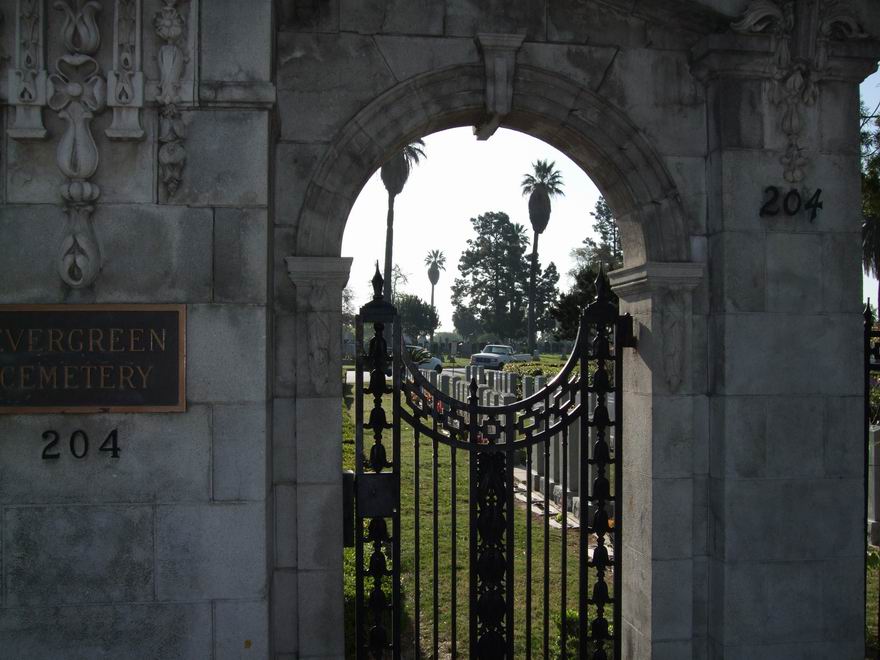

Outline Of The Area Of The Kendrick Lots In
Evergreen Cemetery: To The Right Is The Location Of The Grave Of Carroll
Kendrick
Lot 618 Marker - The Kendrick Plot includes Lots 618-620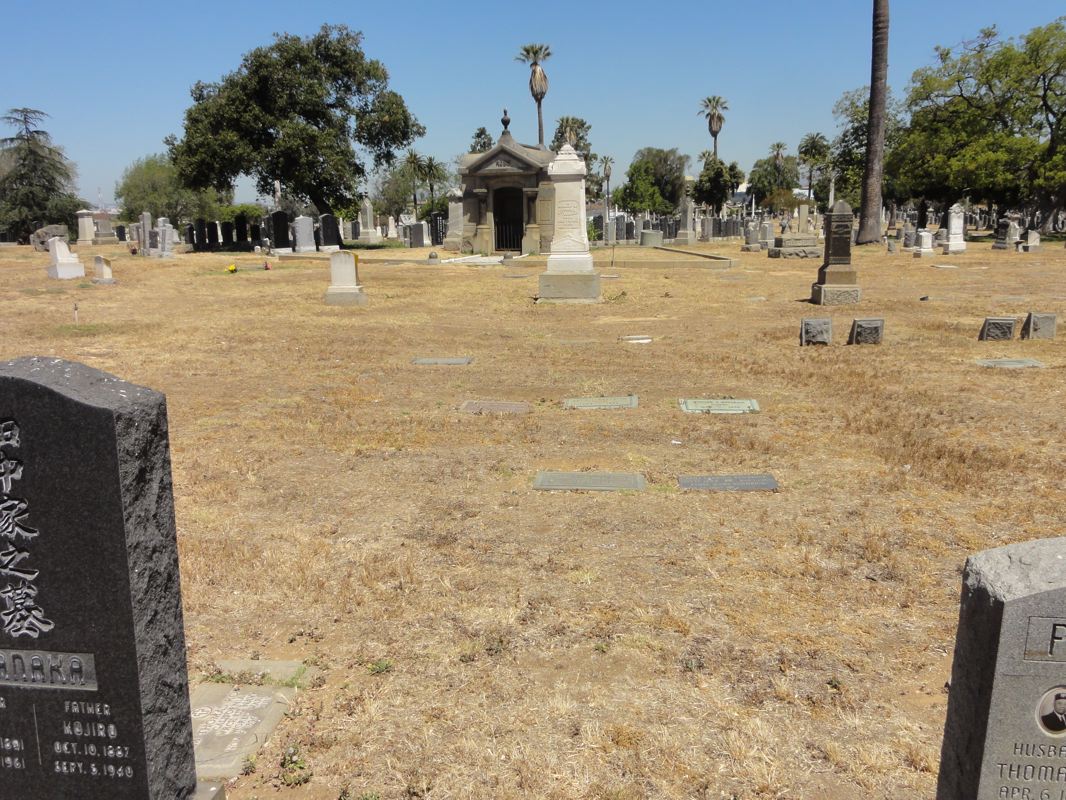
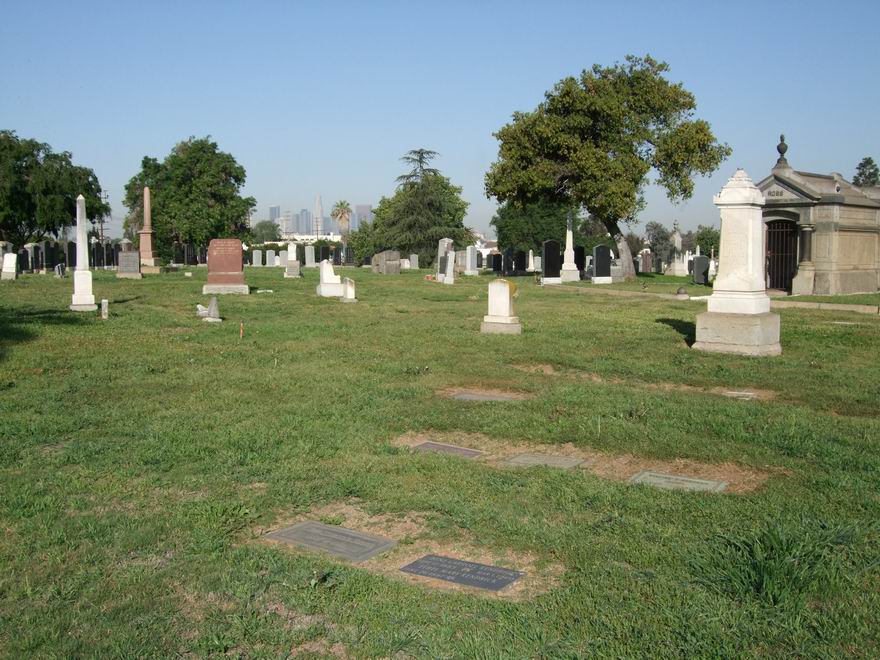
See The Los Angeles Skyline In The Distance.
Looking West From The Kendrick Plot In Evergreen Cemetery
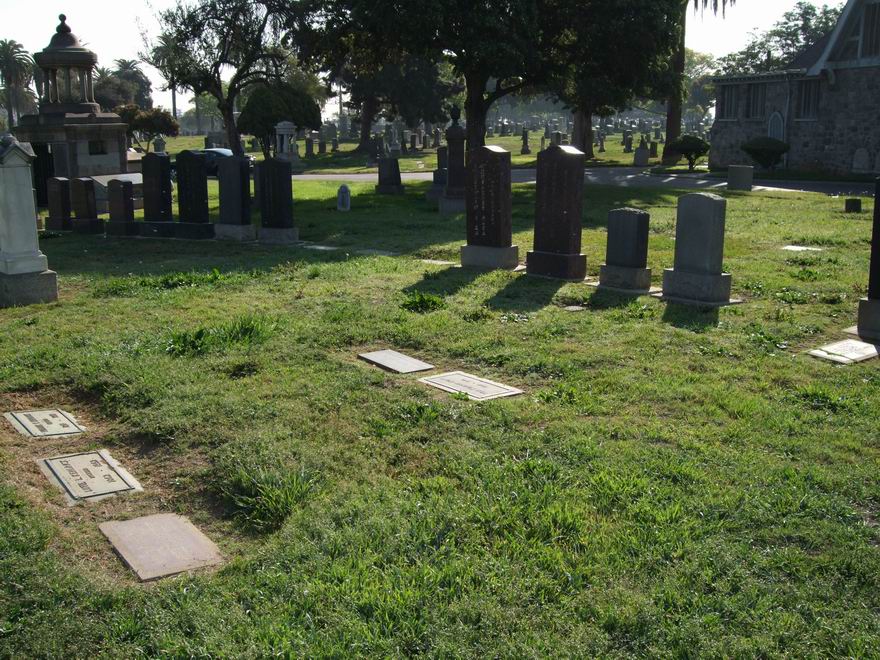
Carroll Kendrick Buried In Foreground - No
Headstone or Footstone
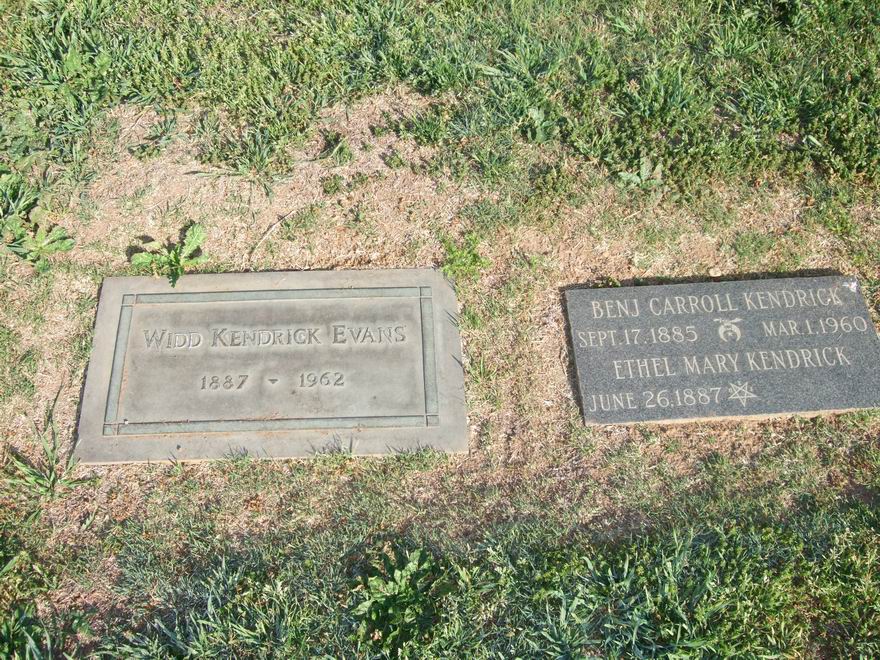
Some Of The Kendrick Descendants Buried In The Kendrick Plot At Evergreen
Some Of The Kendrick Descendants Buried In The Kendrick Plot At Evergreen
![]()
The photos of the Carroll Kendrick family plot were taken on two trips to Evergreen Cemetery, once in 2008, and the other June, 2012. On the first trip, I was most saddened at the fact that there is no marker to mark the final resting place of the old preacher of the 1800s. In the ensuing four years, I came to doubt myself to think that I may have missed something in the way of a marker that could be there. Having visited again, the certainty is eminently stronger that there is no marker. It would be good if a marker could be put in place to signifiy his final resting place. If visiting the plot, be sure to visit the other graves of preachers and church leaders in the same cemetery, some of whom include, Michael Sanders, T.D. Garvin, and B.F. Coulter.
Photos taken 2008,2012
Site produced in 2008
compliments of Scott Harp
TheRestorationMovement.com
![]()
